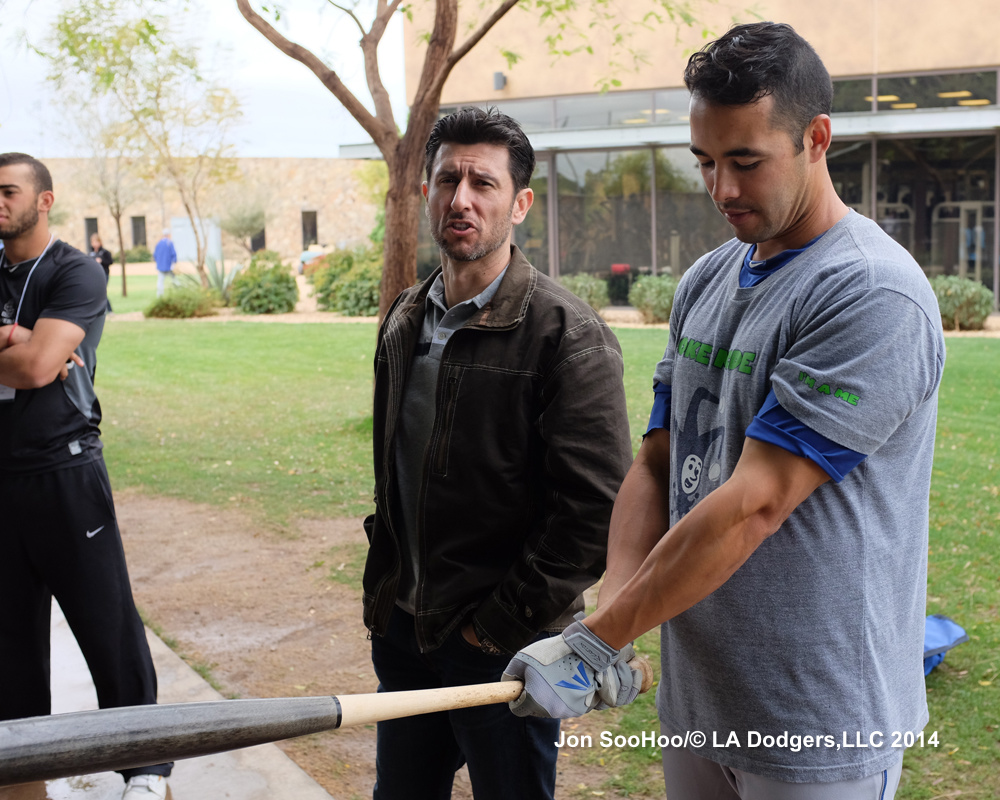[mlbvideo id=”31405521″ width=”550″ height=”308″ /]
By Jon Weisman
Watch the video above, with our new friend Justin Turner at the plate (last year while he was still a Met), because something very cool is happening.
You’ve heard of players taking good or bad routes to balls, or having a quick or slow first step? Ever wondered who can come from behind to catch up to a ball the fastest? Now, Major League Baseball Advanced Media is preparing to quantify that.
The system is being rolled out in select ballparks this year but should be fully operational in 2015.
… MLB.com analyst Jim Duquette, who spent 20 years in front offices, including four years as an MLB general manager, said this will remove much of the subjectivity from a club’s own player analysis.
“When you look at how scouting has been done in the past, there’s a lot of subjectivity to the evaluation,” he said. “Some guys I have found have varied, from scout to scout, in terms of their opinion of each player. There is a lot of quality defensive statistics out there, but they’re not completely accurate. A lot of them are dependent on somebody charting, whether it’s UZR or DIPS or Defensive Runs Saved, and they can only go so far. Some players . . . range to their left better, some range better to their right, some come in on ground balls better than others, some have better first-step quickness.
“The exciting thing about this new technology is, you can start to take the subjectivity that is given to you by the scout and blend it with raw data now, and come up with a truer picture of evaluating a player. So when you take that data and compare it to others in the game, you can really find out if that position player is the best at his position. You can measure potential free agents, you can measure current free agents.” …
The technology won’t be limited to defensive applications – it will inform every aspect of baseball. Might be more than some of us can digest, but the possibilities are pretty exciting.
Elsewhere …
- Matt Meyers of ESPN.com wrote about other presentations at the MIT Sloan Sports Analytics Conference. This part (though the whole article is worth a read), intrigued me …
… “Will we get to a point where a team moves its best defender to different positions from hitter to hitter based upon analytics?”
That was a question asked by the audience that really seemed to resonate with the panelists.
As Neyer noted, the Pittsburgh Pirates showed last year just how much defensive positioning can help a club when the field staff buys into, and Silver posited that it would only make sense, if you had a superlative defender with a variety of skills, to put him in the space where the ball is most likely to be hit.
So if you’re the Braves and you’ve decided to “shift” Ryan Howard, instead of just shifting everyone to the right, you would put Andrelton Simmons exactly where Howard is most likely to hit it, whether or not that is right next to the first baseman or up the middle. Squadron made the point that it’s surprising that teams don’t flip-flop their left and right fielders more often depending on the hitter, and quite frankly this makes a lot of sense. There are a number of teams on which the guys in left and right have extremely disparate defensive skills, and this is an easy, yet logical, switch. …
- Know who Dick “Turk” Farrell was? If not, it’s time to go to Ernest Reyes’ latest at Blue Heaven, the Dick “Turk” Farrell 1961 Union Oil Dodger Family Booklet.
- Dodger farmhand Matt Shelton deserves more attention, according to Harold Uhlman at Think Blue L.A.
- Today in Jon SooHoo.




